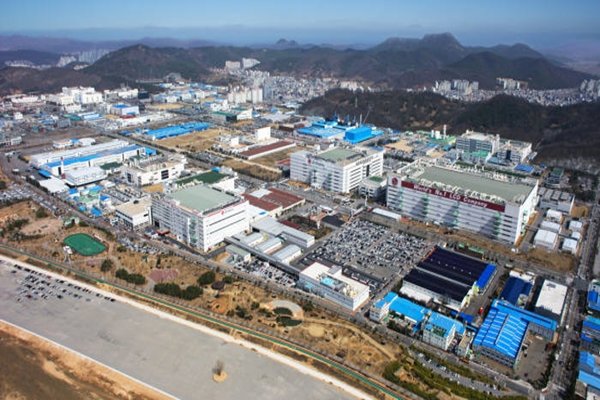Highly-reliable display that prevents statics from occurring has been developed by huge South Korean corporation and a small and medium South Korean company after working together for 7 years. They used ‘dream material’ called CNT (Carbon Nanotube). While large corporations are hesitant to making investments into high-tech materials due to a long period of R&D, their development of this highly-reliable display is drawing attention as they succeeded in commercializing it from a long-term perspective.
According to industries on the 7th, LG Display joined hands with a small and medium company called Nano Solution, which is located in Jeonju, and have commercialized highly-credible displays for specialty purposes. They applied CNT into these displays with touch input function in order to prevent statics. LG Display recently started mass-producing these displays in Gumi and it is heard that it has already secured South Korean and foreign customers.
CNT was seen as a new material within semiconductor and display markets in the past. It had high expectations that it would be applied to semiconductors, displays and others due to high strength, elasticity, thermal conductivity, and electric conductivity. Although it has been about 10 years since CNT started drawing interests, huge markets have yet to be formed despite initial expectations.
CNT was brought up as one of materials that might replace transparent electrodes for touch panels due to emergence of flexible displays. While ITO (Indium Tin Oxide) is mainly used as a material for transparent electrodes, ITO is broken whenever it is used for displays that have their boards bent or folded. However CNT also showed only signs of promise and there is yet to be any particular examples where CNT was applied.
LG Display instead paid attention to CNT’s excellent antistatic function. Short circuits occur when there are statics within touch displays and this can cause every functions of displays to be shut down. This is a very sensitive matter as short circuits have to ultimately be considered as a vehicle defect in automotive markets that require high reliability.

LG Display and Nano Solution applied CNT to displays. CNT plays a role of antistatic unitthat quickly sends current that is formed excessively all of sudden. Professor Myung Jae-min of Yonsei University who has been studying on CNT for long time also participated in this project.
Not only CNT has antistatic function, but it also plays a role in improving thermal resistance within a display as it has high conductivity and can withstand low temperature and high temperature.
LG Display actively supported Nano Solution in order to commercialize CNT that will be applied to special displays with high reliability used for cars and airplanes. In order to have stable production, it also invested into Nano Solution. However it did not disclose exact amount of investment.
It usually takes between 5 to 10 years of R&D in order to develop high-tech materials. On the other hand, large corporations need to have visual results within 2 to 3 years whenever they work with outside companies. It is difficult to find world-class businesses that made long-term investments into R&D for materials and have secured original technologies. This is the reason why it is very meaningful that LG Display, Nano Solution, and Yonsei University have developed this new display together.
“Although level of interests towards CNT has decreased as trend has shifted from CNT to graphene, Nano Solution has been working on R&D for CNT which triggered LG Display to see Nano Solution’s potential and to decide to work Nano Solution for many years.” said Professor Myung Jae-min. “They presented a good example to South Korean markets.” Professor Myung also added, “While large corporations need to be very active on commercialization when a university carries out research into a technology and presents its potential, many large corporations want results within a year or two in contrast to reality. These large corporations need to understand that it is really important to surpass technical barriers by finding skilled small and medium companies with universities and supplementing any deficiencies.”
Staff Reporter Bae, Okjin | withok@etnews.com